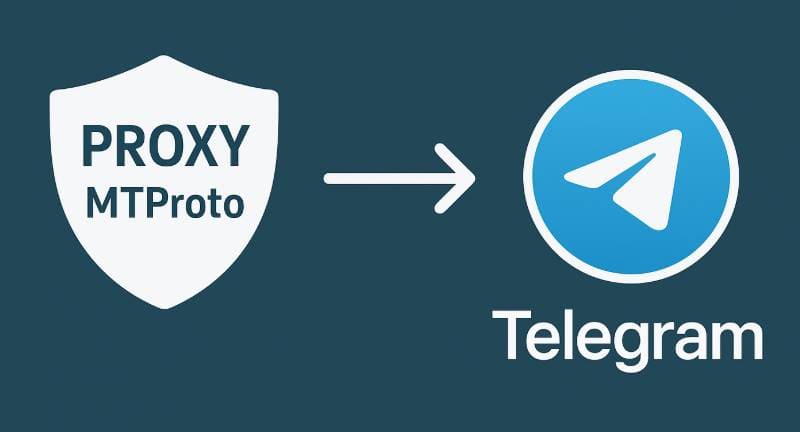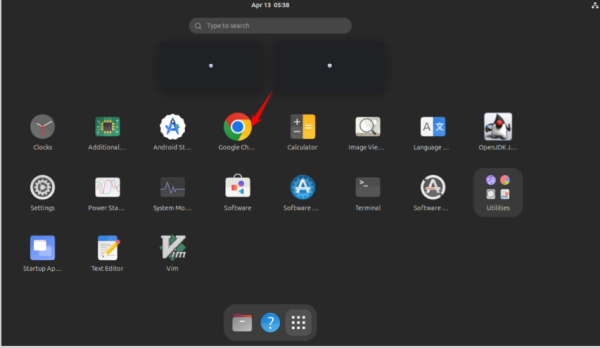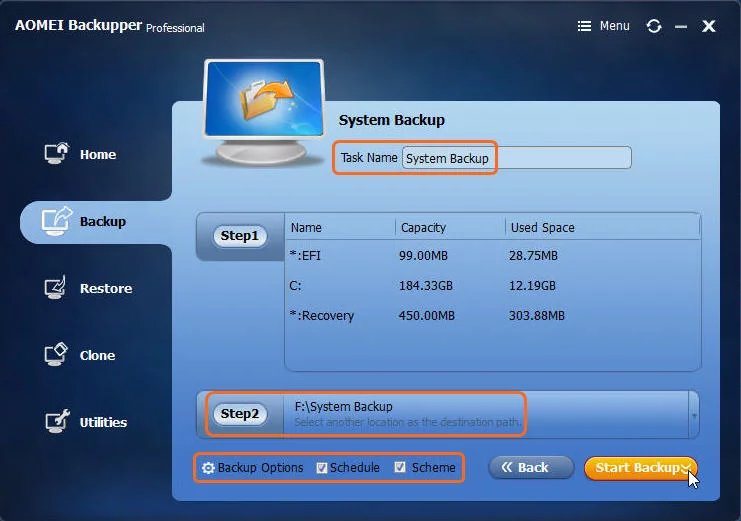Until now, a famous Linux distro, Kali Linux, has always been used by security experts or hackers. Why? Simply because Kali Linux has built-in a wide range of tools for penetration, hacking, analysis, etc. all clearly categorized. Let’s refer to anonyviet.com on how to install and use Kali Linux on VM Ware virtual machine.
| Join the channel Telegram of the AnonyViet 👉 Link 👈 |
Features of Kali Linux:
– FEATURES KALI LINUX 2.0
- Runs on Linux kernel 4.0
- Use Gnome 3 Desktop instead of gnome-fallback
- Improved wireless hardware and driver compatibility
- Supports various Desktop Environments
- Update Desktop Environment and tools
- Equip new wireless testing tool
- Add off-screen notifications, you won’t miss a thing
- Ruby 2.0 support makes Metasploit load faster
- New built-in screen recording tool
- The developer team has removed the Metasploit Community and Pro package. Instead provides a pre-installed open source Metasploit-framework package.
Kali Linux introduction video:
1. Download Kali Linux:
You can download the installation of Kali Linux as an ISO file by direct link or via torrent at:
– In terms of capacity, the most “light” installation ISO file of Kali Linux is also more than 1GB for x86 architecture, much heavier than the 32-bit version of common operating systems, as well as Linux distros is different. But what makes Kali Linux special is its very high compatibility with many different medium configuration machines. Let’s test it with us at the bottom of the article.
In this article, we proceed to install the Kali Linux Light version (meaning light, Link to download ISO file directly herey)
2. Steps to install Kali Linux on VM Ware virtual machine:
.As we all know, VM Ware software is one of the most stable virtual machine creation applications on the Windows environment. The version of Windows we used in this test is 11.x. Now start, you start VM Ware, create a new virtual machine as usual, select Custom mode to change customization as you like.
The options are as usual, go to the operating system selection as shown below:
- Guest operating system: you choose Linux -> of course
- Version: choose the highest Debian supported on VM Ware, here is 7.x
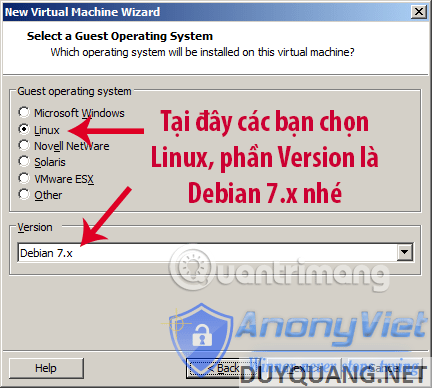
Note that if you install Kali Linux 64 bit, you must also choose Debian 64 bit
The rest of the steps are as simple as usual Next > Next > Finish Please. Some of the parameters we apply in this example post:
- Hard drive capacity: 40GB
- RAM: 1660MB
- Network mode: NAT
- CPU: 2 cores 2 cores
- I/O Controller type: LSI Logic
- Virtual disk type: SCSI
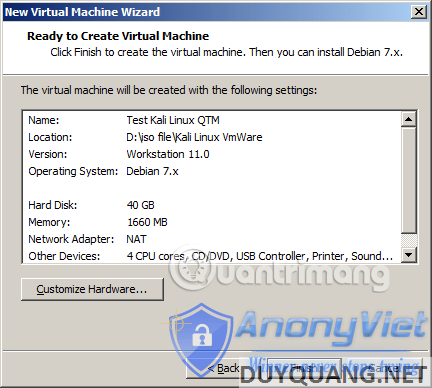
Because there are many small and trivial steps, I will divide them as below. We invite you to follow us!
Step 01:
- When starting to install Kali Linux, you will see an image like this:
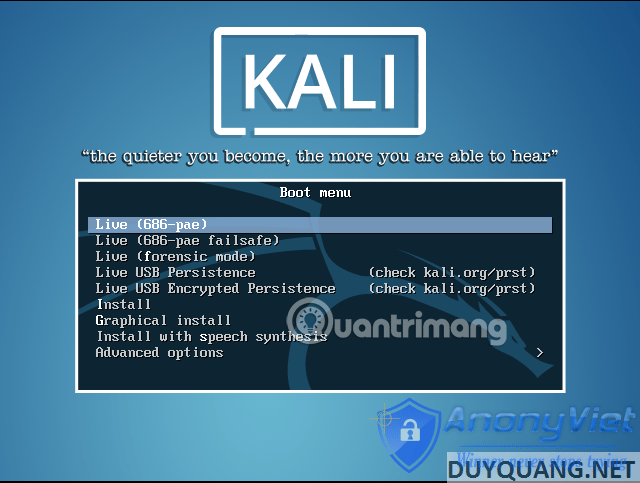
There are several options such as Live, which is an online installation, requiring the machine to have an Internet connection. Because we install from the full ISO file, here we switch to the Install (command line interface) or Graphical Install (supported graphical interface).
Step 02:
- The first is the Language selection section, there are many languages listed here, if you want to use Vietnamese, you will scroll down near the bottom of the list and you will see a section. Vietnamese – Vietnamese same picture:
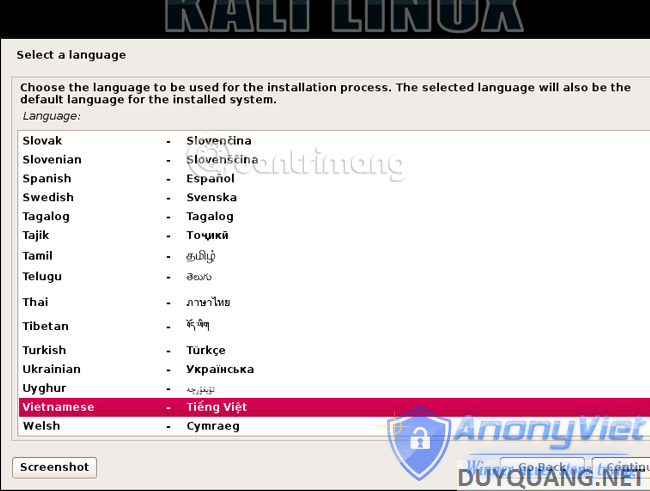
- Click Continue to continue
Step 03:
- Yes, very polite notice of Kali Linux when you select the Vietnamese language pack when installing. That is because it is incomplete, so some messages and conversations will still display the English language as default. Press Continue:
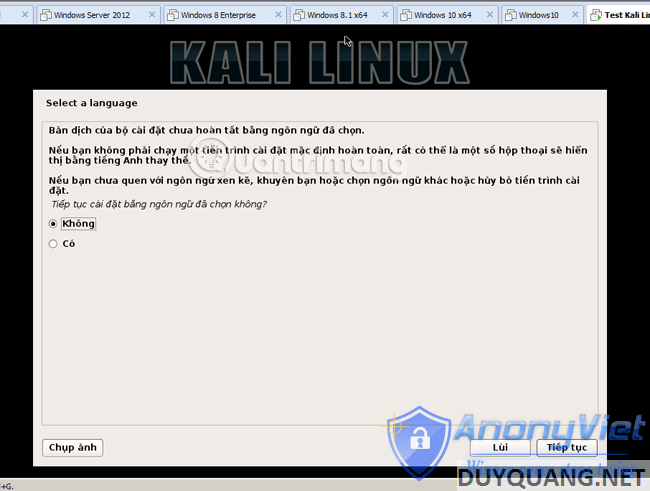
Step 04:
- Select the geographical location as Vietnam:
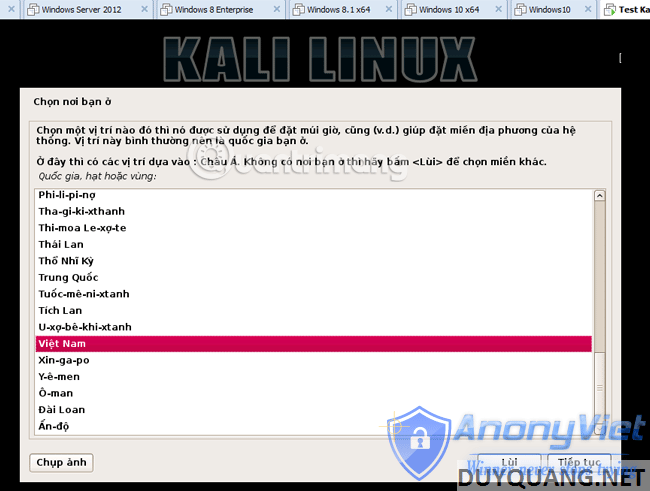
Step 05:
- Select typing mode, or Keyboard configuration. I recommend that you keep this percussion part as English instead of other languages, because when it comes to entering the account and password, the language system on the keyboard will change, if you are not used to it, it will change. I don’t know which way to find:
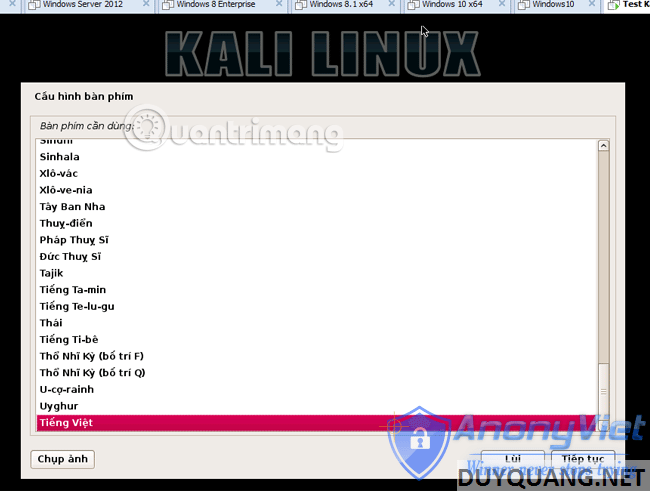
Step 06:
- Click continue, the installation process will read and write system files from the ISO file and gradually create the Kali Linux operating system. At this step, you will name the computer like set PC Name on Windows so:
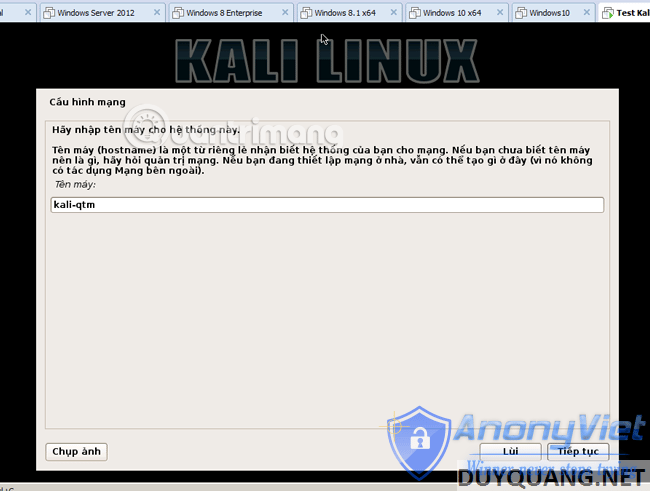
Step 07:
- Next step, configure domain. If you use a single machine, you can just skip this step and click Continue, the system will automatically create a domain with the name localhost to use:
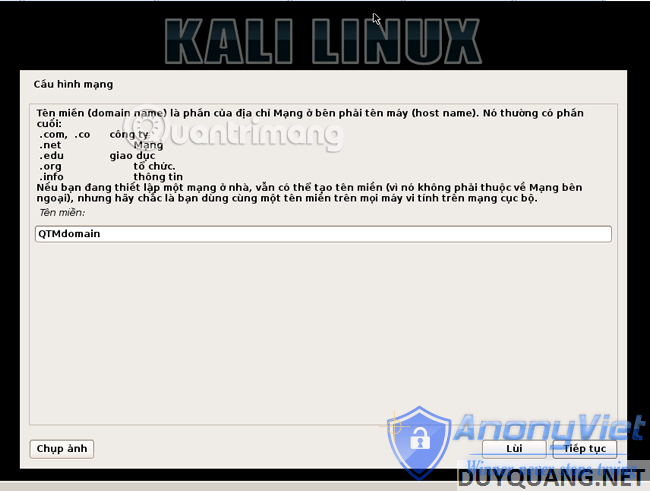
Step 08:
- The system will automatically configure the network, and the setup will be considered complete. Next is to set the admin password for the root account – here Kali Linux translates as the master account:
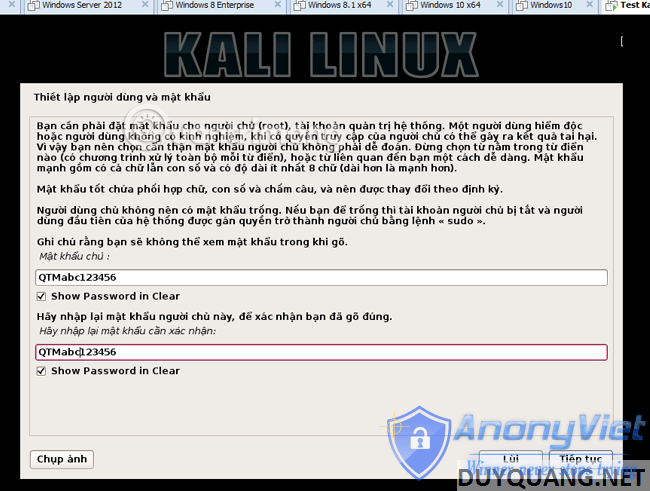
- The root password requires a combination of special characters, uppercase, lowercase, numbers, and letters. Here my example is QTMabc123456
Step 09:
- Next, Kali Linux will ask you to format the hard drive and what parts to use for the installation. Here I choose the first one, whole hard driveEnglish isUse entire disk:
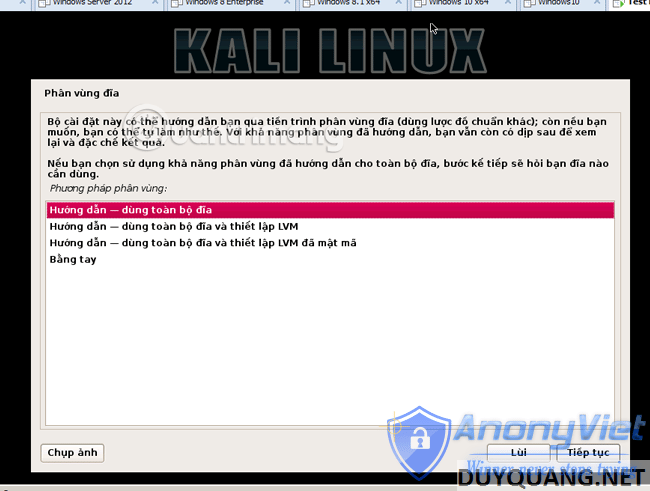
Step 10:
- Select the 40GB partition that we set up in the previous step:
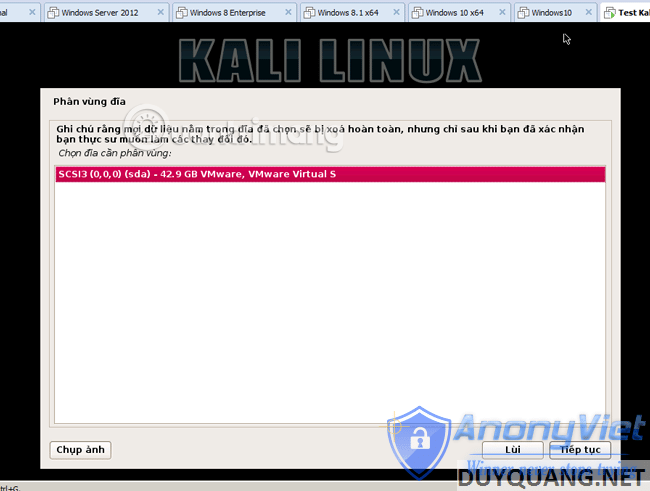
Step 11:
- For new users, just keep the option to throw all system files into a single partition (All files on one partition – recommended for new users) – All files in one partition (recommended for new users):
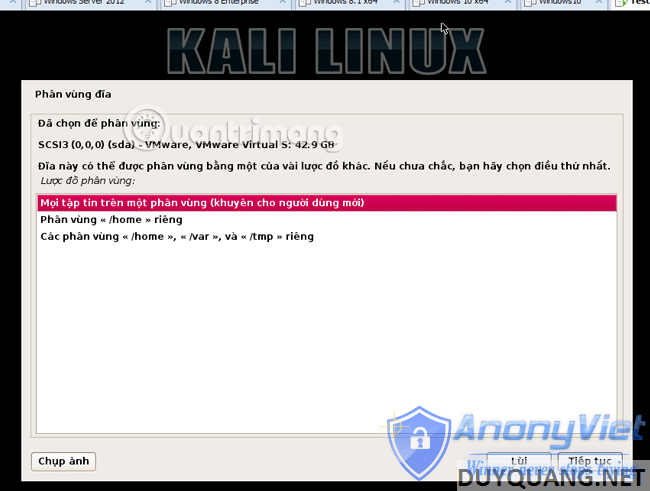
Step 12:
- Select section Finish partitioning and write changes to disk – Finish partitioning and write changes to disk:
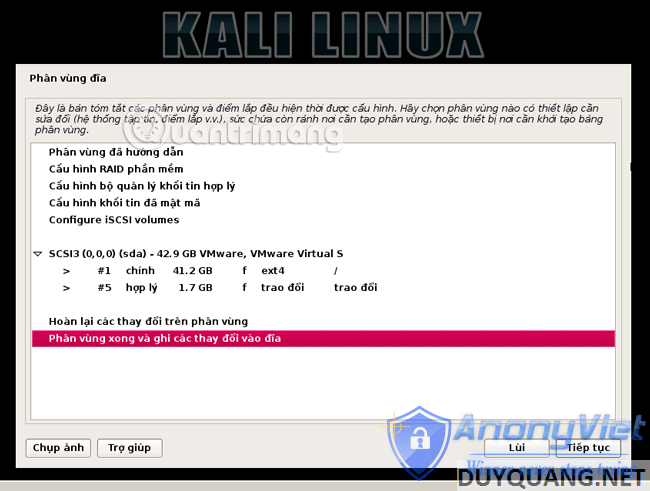
Step 13:
- Now save the changes. Select Yes – Yes at this step:
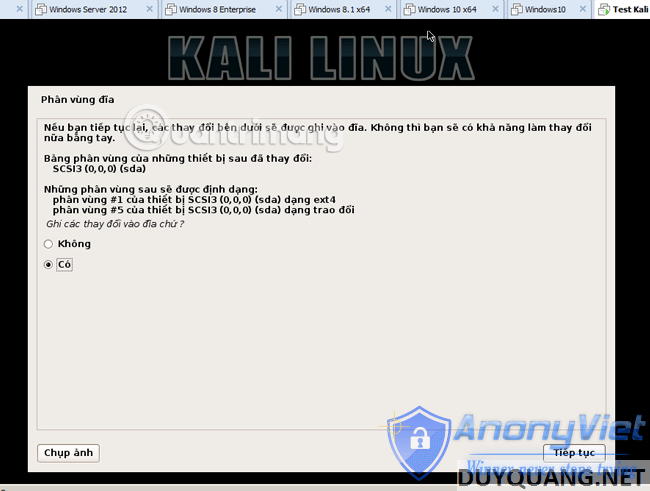
Step 14:
- This process is recorded as Installing this System will take about 10-15 minutes. Sit back and wait:
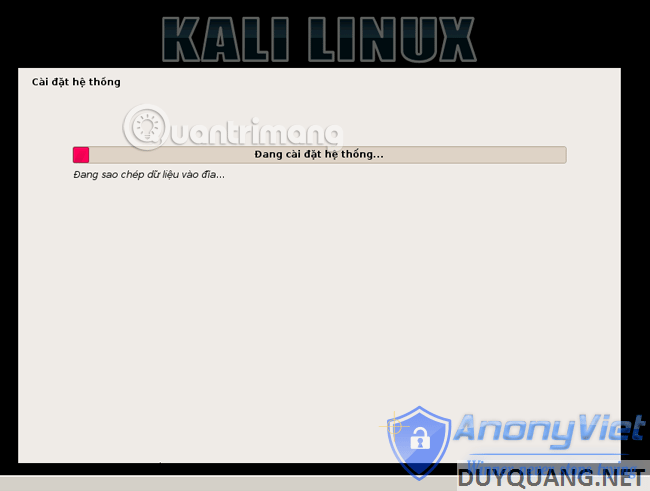
Step 15:
- Next is the configuration part Network mirror – Vietnamese package translates as network cloning. Select Yes – Yes to be able to use any network in the mirror system to update and update the software later:
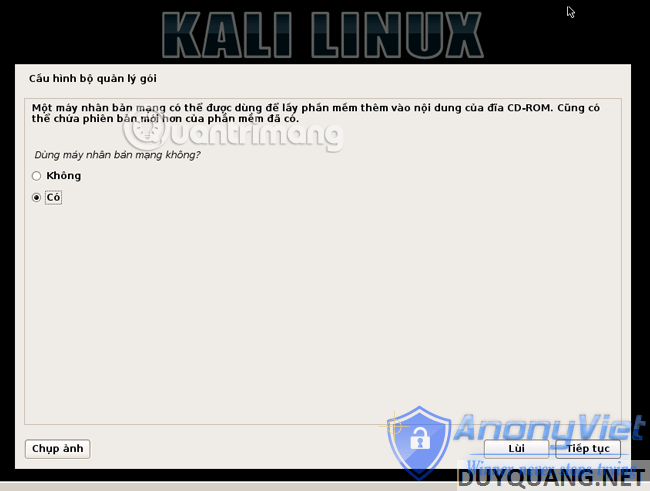
Step 16:
- Leave this blank:
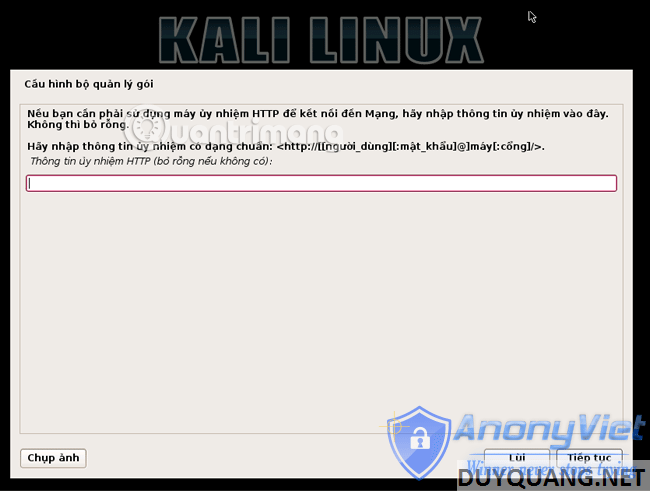
Step 17:
- The configuration process will run again, it will also take about 10-15 minutes. Note that this next step is extremely important, it is the option to load GRUB into the boot section of Kali Linux, it is mandatory to choose Yes – Yes:
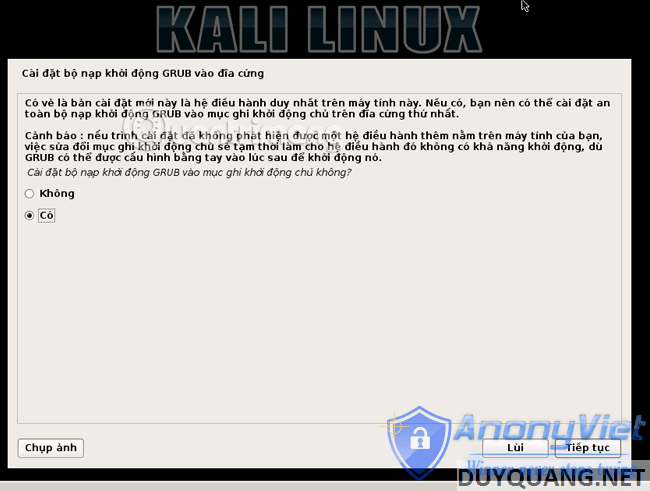
– If GRUB is not selected at this step, Kali Linux will not be able to boot
Step 18:
- Select /dev/sda let the system throw GRUB in there:
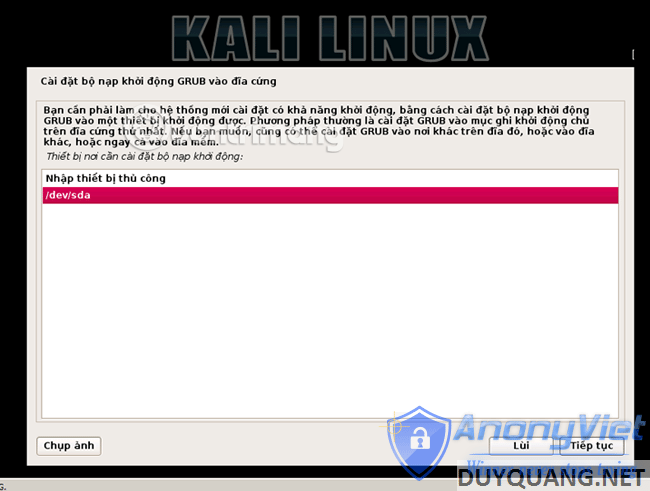
Step 19:
- Then the system continues to run for about 5 more minutes. That’s basically done, to the notification screen Installation complete like this, you click Continue and the system will automatically reboot:
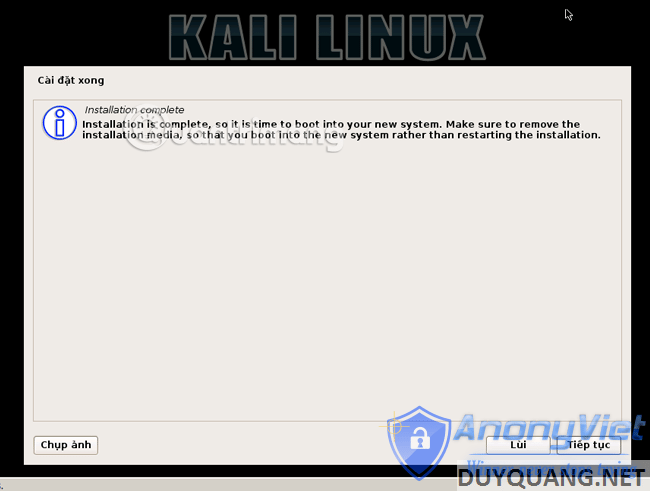
– Actually, Kali Linux will run for about 5 more minutes and then Restart
Step 20:
- When we see the login screen like this, it means that the basic Kali Linux installation is finished, now we can log into the system. This is the step to enter the root account, the password as initialized in the step above:
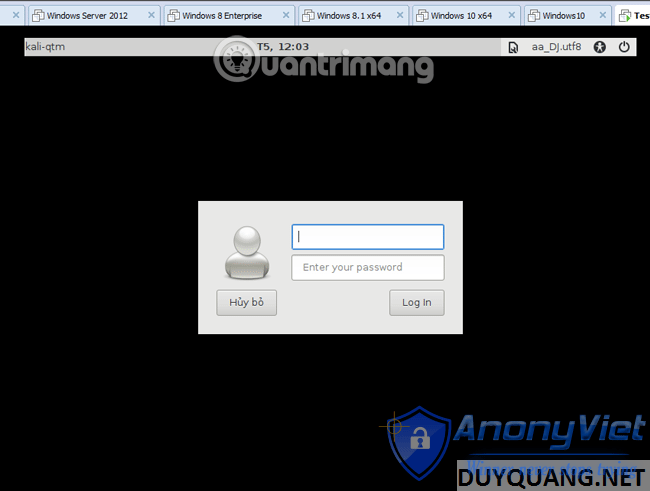
Username: root and password: QTMabc123456 used in this test
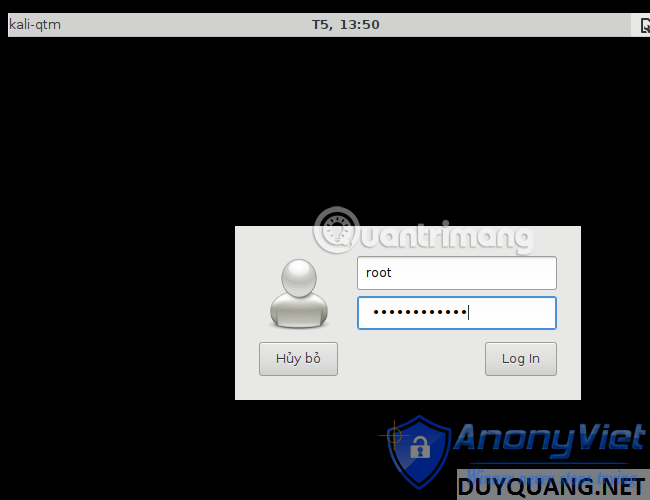
- And here, the screen when logging into Kali Linux for the first time will look like this. True to the message above, some dialog boxes are still in the state of half Vietnamese and half English:
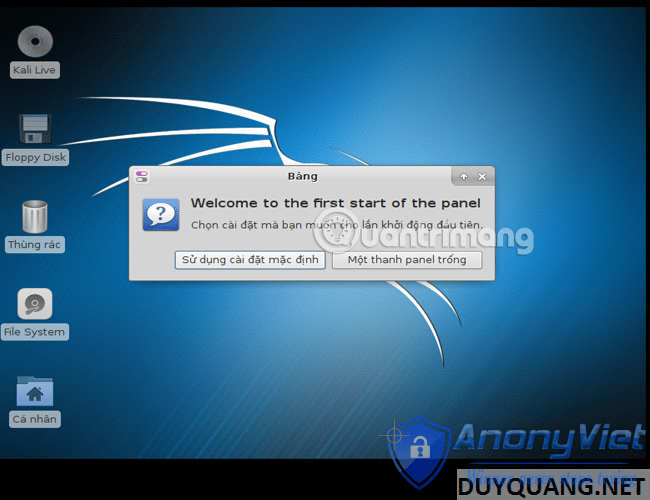
- In general, the interface of Kali Linux is quite similar to other Linux distros such as Debian, Ubuntu, Linux Mint… All programs and applications are arranged in the Applications section on the upper left corner of the screen as below, and you can see a lot of applications that support network analysis and security…
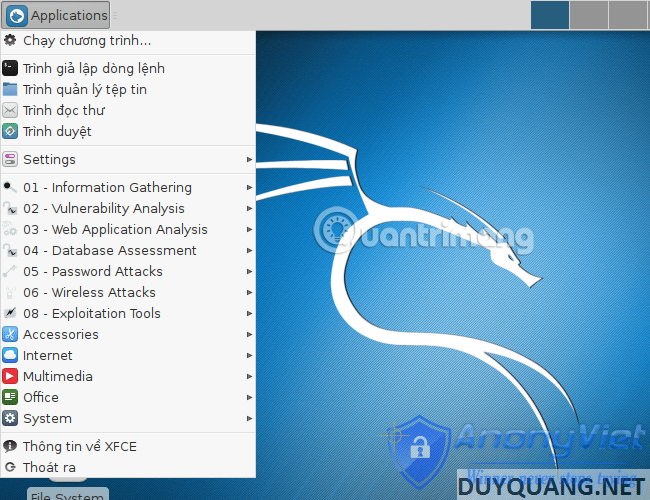
- The shutdown, restart, and sleep menus are also located in the Exit section
- The file browsing window feels quite similar to Windows. The basic navigation buttons for windows such as minimize, maximize, close … are arranged exactly like Windows, will not have the Ribbon hybrid or slightly “paradoxical” like on Mac OS X:
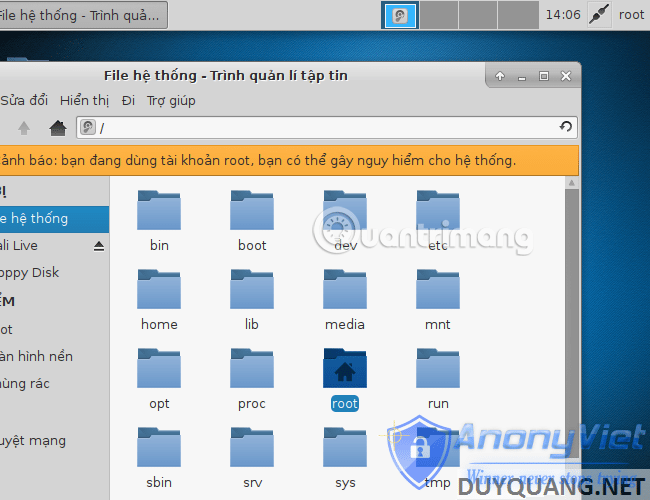
- And like all other distros in the Linux family, Kali Linux’s default browser is definitely Mozilla Firefox, with many add-ons that support security as shown:
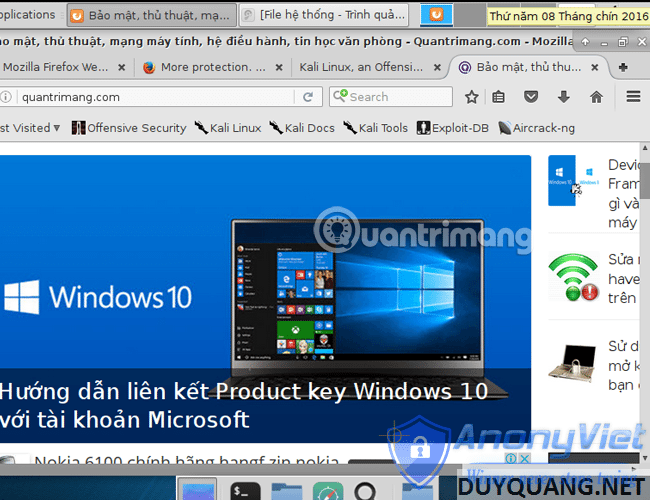
- And finally, Terminal – a command line tool that is definitely indispensable in any Linux kernel-based operating system:
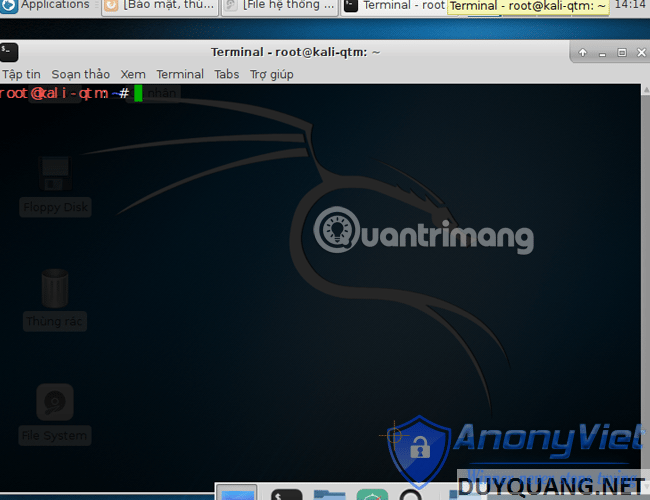
Good luck!


